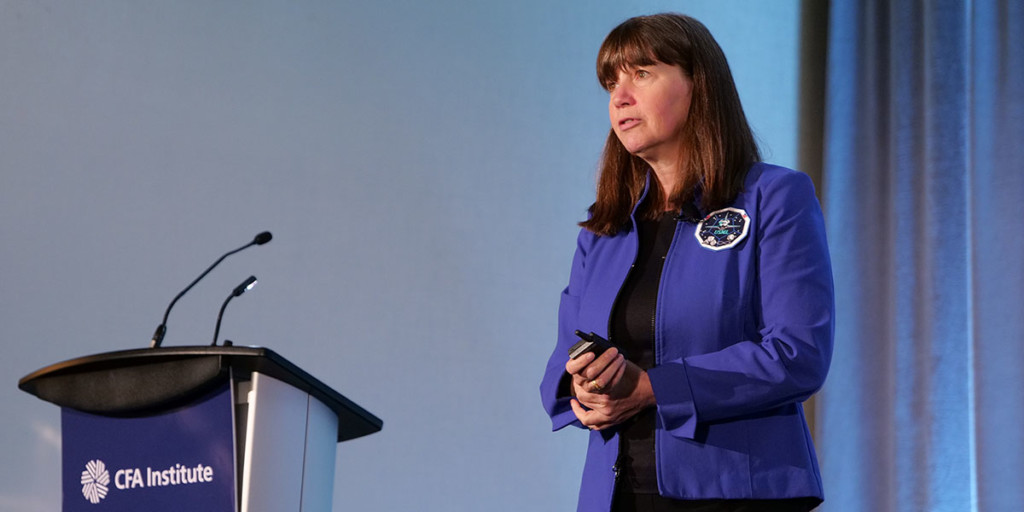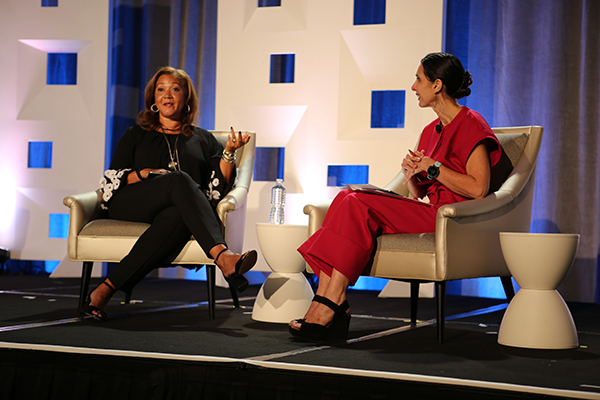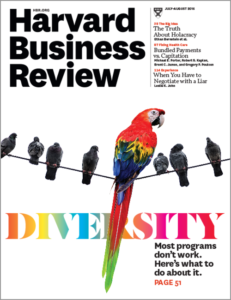By Susan Hoover, JD
Investing through a “gender lens” is gaining in popularity, and large financial firms are stepping up to meet the demand.
Earlier this year, State Street Global Advisors (SSGA) became one of the latest firms to bet on gender diversity, when its new exchange-traded fund (ETF), the SPDR Gender Diversity Index, debuted on the New York Stock Exchange. Outfitted with an appropriate ticker symbol — SHE — the fund tracks an index of companies that have high proportions of women in senior leadership positions. Those companies that rank in the top 10% in each sector are included in the portfolio, with the proviso that each also have at least one woman on its board or as CEO.
The fund’s goal is to achieve market-rate returns by investing in US companies that recognize the value of gender diversity and do their part to ensure that women are well-represented on their boards of directors and in management. As of May, about 150 companies were included in the ETF, and returns have closely tracked the S&P 500 index.
The SHE ETF is hardly the first to embrace impact investing, but its growth has been phenomenal. Since launching in May, the fund has attracted $270 million in assets — more than any other ETF that debuted in 2016, according to Bloomberg. In a first for a State Street ETF, SHE also has a charitable component. The charitable fund, SHE Gives Back, donates money to organizations that counter sexism directed at girls in early childhood who want to become leaders.
Lynn Blake, CFA, EVP of SSGA and CIO of global equity beta solutions, oversees the fund’s management team. With close to 30 years of experience in equity index strategies and managing equity index portfolios, mostly at SSGA, she is a logical choice.
For Blake, there is no such thing as a typical work day, but that’s exactly why she loves her career. What she enjoys most, though, is working directly with clients and helping them to achieve their goals.
When not at work, she describes herself as “busy by choice.” She is the mother of two teenage daughters, and strives to be an active part of their lives. An avid hiker, gardener, and softball player, she also has completed both a marathon and a half-Ironman competition — 1.2-mile swim, a 56-mile bike ride, and a 13.1-mile run.
I spoke with Blake about the SHE ETF, diversity in investment management, and the wisdom and experience she has accrued both within the profession and without.
CFA Institute: Tell us about the SHE ETF. How did you become involved? How are companies selected and how would you describe the management process behind it?
Lynn Blake, CFA: The idea for SHE emerged from conversations with one of our clients about advancing gender diversity in the investment management industry, and more broadly about promoting women as leaders in corporate America. It was really this inspiration that drove our investment and product teams to launch the SHE ETF. At SSGA, we have deep expertise in indexing and a long heritage of research and development of proprietary indexing strategies. This ESG-themed index was a natural extension of our core capabilities. We wanted to create an index strategy with the dual goal to do “good” and do “well” — that is, to do “good” by identifying companies that had been able to attract and promote women to leadership positions, and also do “well” with the strong investment thesis that greater diversity leads to better decision making and better corporate performance.
In a Boston Globe article about the ETF, you said, “It’s generating a lot of interest because it addresses the important social issue of gender equity in corporate America.’’ In what way?
We know that women represent close to 50% of the labor force, but are underrepresented even at entry-level jobs. These numbers continue to shrink significantly as you go up the corporate hierarchy. Specifically, less than 20% of women fill leadership and board positions in corporate America with just 4% of women obtaining the CEO position in S&P 500 companies. The SHE ETF identifies the companies that have been able to achieve strong gender diversity at the board, CEO, and senior executive level, allowing investors to allocate capital directly to these companies that have gotten it right.
You entered the investment management industry at a time when there were very few women. What was it like then, and how is it different today? What drove your decision to enter such a male-dominated industry, or did you not see it that way?
Honestly, it never occurred to me to consider issues of gender inequality when I first joined the investment management industry. I joined the industry right out of university, and my perspective was that the business world was like the academic world — based on equality and merit. This perspective was reinforced by the fact that the team I was hired into had several female portfolio managers already, so I did not immediately feel that the industry was male-dominated. What I did quickly realize was that senior roles and leadership positions were almost entirely filled by men. Unfortunately, that has not changed as much as I would have hoped or expected after 25 years.
What are some of the advantages of having women in leadership roles, be it in the C-suite or on investment teams?
There has been study after study that supports the business case that gender diversity has positive financial outcomes. Research conducted by McKinsey, Catalyst, Cayman Institute, and Credit Suisse are a few examples. Two more recent studies worth highlighting were done by MSCI and the Peterson Institute. The MSCI paper, “Women on Boards: Global Trends in Gender Diversity on Corporate Boards,” concluded that strong female leadership did generate a higher return on equity, but also that these companies had less governance issues such as bribery, corruption, fraud, and shareholder battles. The research published in February 2016 by the Peterson Institute also supports the case of stronger corporate performance. This study was particularly interesting because it went beyond board and CEO-level diversity, and found that diversity among senior executives was more impactful than diversity solely at the board or CEO level.
So all this research corroborates what I see in my own work experience. When there is greater diversity, whether it is at the firm level, team level, or even just in a meeting, the dialogue and dynamic of that group is different — which leads to a very different organizational culture, and, I would argue, better discussion, more challenge, stronger innovation, and ultimately a better result.
And somewhat related, how do you find alpha, or what particular skills do you, as a woman, bring to portfolio management?
I have built my career in indexing and passive investing, and ultimately believe that markets are quite efficient. I believe that trading costs and fees erode long-term returns, making alpha very elusive for the average investor. However, I do believe that other factors beyond beta drive returns and those risk premias (like value, size, and quality) can be harvested efficiently through a smart beta strategy. Gender diversity can be one of those factors. I think my skill is to bring a pragmatic approach to investing and to help investors achieve their goals in an effective and efficient manner.
So how, then, do we encourage more women to join the industry? And retain them once they are there?
It starts with a focused effort to recruit women from business schools. [The average enrollment of women in full-time MBA programs at 36 business schools climbed from 32% to 36% between 2011 and 2015.] I think the investment management industry is a great career for women, but I worry that there are negative perceptions due to the global financial crisis, Occupy Wall Street, and a general distrust of banks and financial companies that deter women from entering the field.
The lack of role models is also an issue, as all you see are a lot of white men. Younger women want to be in an industry with peers, so women need to be more visible and sell what the benefits of the field are to people of both genders and all colors.
I also think there is a view that work/life balance and being a working mother are difficult for a successful career in asset management. Millennials expect to develop both a career and a life, so we need to dispel both misconceptions. We need to make it an appealing and balanced way to make a living.
We also need to do a better job when recruiting. We must ensure that all job descriptions are inclusive and gender-neutral, insist on a balanced slate of candidates in the interviewing process, and train managers against unconscious biases that can creep into the hiring process. In order to retain women in the industry, careers must continually be developed through training, new opportunities and roles, and stretch assignments — in an environment where promotions and compensation are clearly based on performance and merit. I believe it is also critical that a company offers flex time, remote access, and easy in/out transitions related to maternity leave. I know I would not have stayed in my job at SSGA had I not been given the flexibility I needed when my children were little.
What are some of the biggest obstacles to the process?
I think the biggest obstacle is a lack of commitment from the top. Leaders need to walk the walk and talk the talk, and truly lead by example through their internal and external communications, executive-level diversity, succession planning, and sponsorship activities. If diversity is a strategic goal for a company, it needs to be just as important as one of their financial goals, such as those measured through EPS growth, net new revenue, margin expansion, and fund performance, to name a few.
There is more pressure now from both women and men, kind of a grassroots effort, for gender diversity. The biggest positive change I have seen is more acceptance with the younger generation of men.
What advice would you give someone considering finance as a profession?
There are so many great career tracks in the investment management industry beyond a portfolio manager or an analyst, so keep an open mind to all the possibilities. The industry can be perceived as very narrow, but there are many aspects to it that can leverage one’s skills, and it is wide open for all kinds of skills.
Based on my own experience and career, finding the right firm or business is more important than finding that perfect position when first starting out. Find a company that is the right “fit” in terms of culture, vision, values, the management team, fellow colleagues, and the overall vibe of the company — one that you are excited to work for. Once you find the right company “fit,” then seek out an area you are passionate about and proud of, where you can build a long-term career. Establish your skills and reputation, then you can pivot across the company to find that best position.
At the Diversity & Inclusion 2018: Strategies for Success conference on 20–21 September in San Francisco, Lynn Blake, CFA, will be participating in a panel discussion on the importance of diverse perspectives at the executive level.
All posts are the opinion of the author. As such, they should not be construed as investment advice, nor do the opinions expressed necessarily reflect the views of CFA Institute or the author’s employer.








Recent Comments